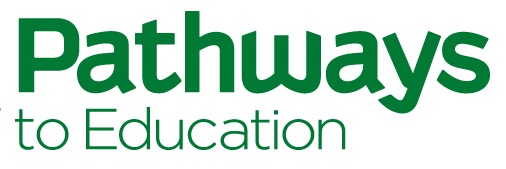Founded in 2001, Pathways to Education was born out of the Regent Park Community Health Centre’s (RPCHC) vision that the children and youth of Regent Park would become the future doctors, nurses, social workers, health workers, and administrators within the community.
Now, 23 years later, Pathways supports over 9,000 students in 31 low-income communities across Canada, helping each of them to reach their full potential.
A Community Comes Together
In 1999, RPCHC’s Executive Director, Carolyn Acker, began to observe the rapid deterioration of the Regent Park community. Parents in the community feared for their children’s safety, and for their futures. They wanted their children to succeed, but the reality was that young people within the community weren’t finishing high school.
The community’s high school dropout rate was 56 per cent, twice the average for the City of Toronto. And for the children of single parents and immigrants, the dropout rate was more than 70 per cent.
Carolyn, alongside a passionate group of community advocates, rallied together to create an innovative and holistic solution to help change the paradigm for young people in Regent Park.
Closing the Achievement Gap
After listening to young people in the community, their parents, and staff of local agencies and schools, the Pathways to Education Program was created to provide students in Regent Park with the academic, financial, social, and one-on-one support they needed to help them overcome barriers to high school graduation.
In September 2001, Pathways to Education welcomed its first cohort of Grade 9 students. Five years later, the results were ground-breaking:
-
Dropout rates had decreased by more than 70 per cent and
-
Post-secondary enrolment had increased more than three-fold
Successful National Replication and Adaptation
Pathways to Education Canada was formed in 2005, with the goal of replicating Regent Park’s success in communities across the country. As the program expanded throughout the country, it adapted to meet the unique needs of students and serve a greater diversity of populations.
Since then, over 25,000 students across Canada have been supported through the award-winning Pathways Program. And the results are still as impressive:
- The average graduation rate in the communities Pathways serves increased by an average of 58 per cent
- 63% of Pathways students transition to post-secondary education or training
- According to a 2019 third-party evaluation, eligibility for the Pathways Program increases annual earnings by 19 per cent, increases employment by 14 per cent, and reduces reliance on social assistance by more than a third.
Today, at the national level, Pathways partners with government, for-profit, and not-for-profit organizations to maximize resources and funding to support programming. Thanks to a community of donors, supporters, volunteers, and community champions, Pathways remain committed to ensuring all youth in Canada have an equal opportunity to graduate from high school and build the foundation for their future success.
Pathways to Education continues to evolve by engaging youth and shaping programming to meet their needs while also ensuring to prepare them for an ever-changing world.
